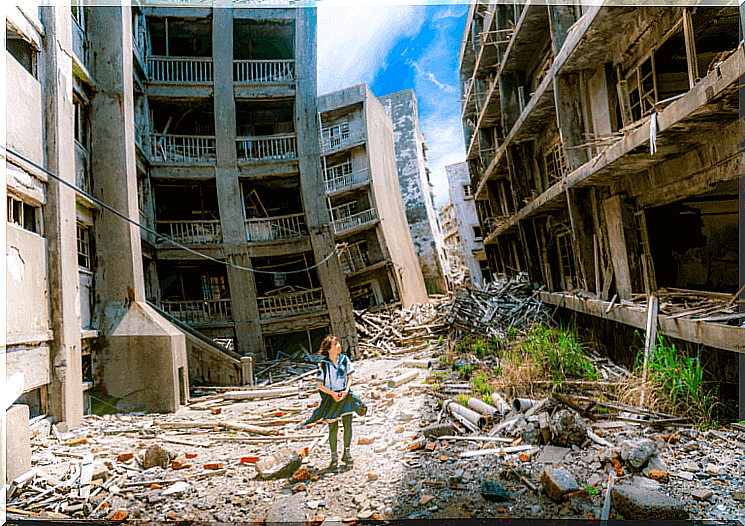Do You Know How Post Traumatic Stress Disorder (PTSD) Is Treated?

We’ve all heard of post-traumatic stress disorder (PTSD). We know it hurts people who have been exposed to situations in which they felt they were in great danger. Unexpectedly, something happened that affected them considerably.
Rape, theft, wars, terrorist attacks are some examples of events that can trigger post-traumatic stress disorder. But the latter is not the result of human-generated situations alone. Natural disasters, such as hurricanes or earthquakes, can also cause it. The question is: how to treat it?
The first steps in the treatment of post-traumatic stress disorder: psychoeducation and breathing
When we are suffering from a psychological disorder, the first thing to do is to see an appropriate psychologist. Similarly, for the treatment of post-traumatic stress disorder, the cognitive-behavioral intervention is the one that gains the most acceptance and is best supported by empirical evidence. Therefore, if we want to minimize the risk of making mistakes, it will be best to find a professional who works in support of interventions specific to this stream.
This therapist will perform an initial assessment, which is fundamental to understanding the problems presented by the patient. Then, it is important that he implements the psychoeducation: he will explain to the patient what is happening to him in terms that the latter can understand. Here we have to highlight the symptoms that the person is suffering from, indicating why they appear, what keeps them and how they will be treated.

The goal is for the person to understand as much as possible what is happening to them. In addition, that she understands why and how we are going to try to resolve her disorder is fundamental for her to adhere to the treatment and for us to get her to improve her condition. Once she understands all of this, we will continue to teach her something basic, to relax.
If we train the patient in abdominal breathing, we will provide him / her with a simple and very useful tool that they can use when the anxiety, so characteristic of the disorder, appears. Also, once the patient has become comfortable with this procedure, it will be important that they practice continuously.
How to continue the treatment of post-traumatic stress disorder?
In addition to giving the person tools to practice when anxiety increases, it is important to work on other aspects that are present, even if they are not always visible. Here we are referring to the thoughts and beliefs associated with the event that started it all. If we do not address the subject, the treatment of post-traumatic stress disorder will be incomplete: it would be like putting a bandage on an open wound.
Therefore, it is important for the patient to learn to identify the ideas that pop up in their mind that revolve around the same message: what happened was their fault. Or that they won’t be able to overcome it. Or that the world is full of dangers and it will happen again. In other words, iel of ilo learn to locate the automatic thoughts and beliefs irrational when they appear.
With this, we will take the first step towards cognitive restructuring. Then, through the Socratic dialogue, all this will be called into question during the consultation. In this way, the course ‘s sessions, the person learns to demolish the ideas that influence the maintenance of the disorder.

Finalize treatment for post-traumatic stress disorder
But, for the treatment of post-traumatic stress disorder to be comprehensive, we need to add one element. As these people tend to avoid anything that has to do with the situation in which they experienced the danger, it is important to work on the exposure, both imaginary and real.
Thanks to this we will be able to get them to lower their anxiety level by getting used to the situation. In addition, they learn that remembering the episode does not mean they have to re – experience it, nor that they will necessarily lose control again. In addition, it will allow them to differentiate the traumatic event from those associated with it, but which are not dangerous.
Likewise, the idea that will have been worked out in therapy will be reinforced in consultation: what happened was something concrete and specific, not a general probable or frequent fact. In addition, it will increase his sense of self-control, in addition to allowing him to see himself as more capable of handling the situation.
Finally, as with all anxiety problems, it is important to include relapse prevention in the treatment of post-traumatic stress disorder. This last step is fundamental because it will help reinforce the progress made and give the patient a feeling of empowerment. In this way, and by following the scientific method, we will be able to get the person to take back the reins of his life.
Images kindly provided by Ian Espinosa, Ander Burdain and Jordy Meow










